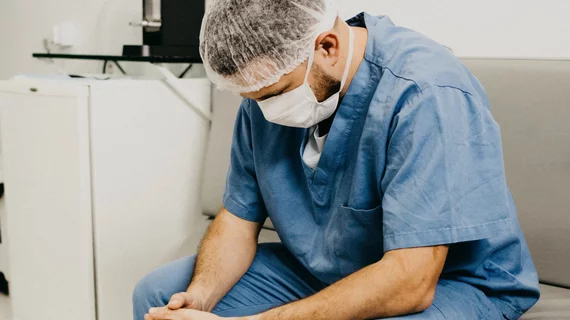Lessons learned: Cardiovascular specialists share 4 key takeaways from the pandemic
COVID-19 disrupted nearly every aspect of the U.S. healthcare system, but it also helped providers examine patient care from a new perspective and ask some big questions. What’s working? What’s needs to be fixed? Where do we go from here?
The Partnership to Advance Cardiovascular Health (PACH), a nonprofit organization focused on improving the outcomes of heart patients, considered such questions from March to May 2020 through a series of discussions. The American College of Cardiology, American Heart Association, American Diabetes Association, Heart Rhythm Society and dozens of other groups participated.
In a new report, PACH shares 4 key lessons they’ve learned from the ongoing pandemic:
1. Continuity of Care is Critical
“It is critical for patients, especially chronic disease patients, to remain in touch with their care teams,” according to the report. “Consistent lab reports, follow-up appointments and medication adherence are of utmost importance. To ensure continuity of care, the health care system must be equipped to continue patient care in the midst of unpredictable events like a pandemic. And when the pandemic subsides, participants agreed, patients need policies that encourage ongoing management of existing conditions.”
2. Telemedicine Is a Vital Bridge to Care
It took a pandemic for telemedicine to finally be fully embraced in the United Sates, and PACH emphasized that such services were a game-changer for patients. There are still numerous challenges when it comes to ensuring all patients are able to take advantage of telemedicine, but 2020 has shown it “can increase contact with healthcare providers and empower patients to manage their disease.”
3. Racial Disparities Drive Cardiovascular Disease and Death Rates
The PACH report took a close look at COVID-19 mortality rates, noting that Black patients have been much more likely to die after contracting the virus.
“These unsettling facts unmask a deep-rooted issue: Social determinants of heath correlate to COVID-19 morbidity,” according to the report. “People of color in marginalized communities are more likely to live in environments with limited access to healthy food, adequate education, good health care and job flexibility. They are also more likely to work in essential services that pay less, further hindering their ability to have a financial safety net during an economic or health care crisis.”
4. Insurance Barriers Impede Patient Care
PACH noted that reducing any barriers to care can play a key role in the treatment of high-risk patients. Insurance providers did work to assist patients during the pandemic through various actions—easing prior authorization renewal criteria, for example—but will any of these changes remain after things get back to normal?
“As the pandemic subsides, the health care system will begin to fully realize the toll of delayed care during COVID-19,” according to the report. “It will be important for patients to resume care without being hampered by excessive utilization management barriers.”
The full report is available here.

